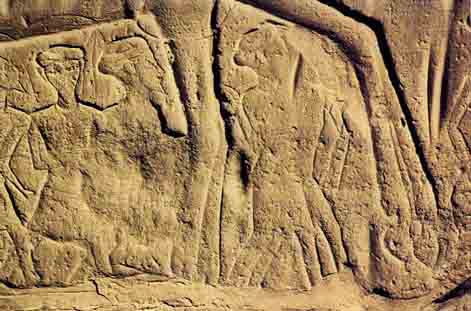Image Details

Frank J. Yurco
Rainey argues, as do other scholars, that the Shosu should be identified with the early Israelites, although he cautions that this does not mean that all Shosu were necessarily Israelites; other ethnic groups—such as the Amalekites, Ammonites and Moabites—may also have origins among the Shosu. Rainey notes that Biblical tradition portrays Jacob and his sons, the proto-Israelites, as pastoralists similar to the Shosu as described in ancient Egyptian sources.
The Shosu style of attire, short kilts and turban-like headdresses, distinguishes them from the Canaanites depicted in other panels on the wall. Identifying the Israelites with the Shosu, therefore, is consistent both with the Biblical description of the Israelites as outsiders who came into Canaan and with the widely accepted, infiltration theory proposed by Biblical historian Albrecht Alt, which sees the Israelites as outsiders who gradually and, for the most part, peacefully settled in Canaan.
